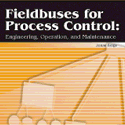 |
 |
| Home >> InTech Magazine >> Briefs >> Article |
|
Wireless networks see infrared as safe alternative Broadband, wireless, indoor, local-area communication networks that rely on non-line-of-sight infrared (IR) signal transmission offer low error rates as well as safe, low power levels, said engineers at Penn State University. "Line-of-sight or point-to-point infrared signal transmission-which is used, for example, in television remote controls-is highly efficient at low power levels but suffers from the need for alignment between the transmitter and receiver," said Dr. Mohsen Kavehrad, professor of electrical engineering. "If someone 'shadows' or blocks the remote control beam while you're trying to change the channel, the signal can't get through. "On the other hand, non-line-of-sight transmission, which uses a broad diffuse beam, suffers less from shadowing but usually forfeits the power efficiency, broadband, and low error rate values that IR transmission can offer," he said. Kavehrad has developed a new link design that uses a multibeam transmitter with a narrow field-of-view receiver. The system has a bit-error rate of only one error per billion bits and uses milliwatt transmitted power levels. "This error rate is unmatched, considering the offered transmission capacity," Kavehrad said. To form a LAN for a group of computers in a room, each machine is equipped with a low-power IR source and a holographic beam splitter. The original low-power beam separates into several narrow beams, which strike the ceiling and walls at points that form an invisible grid throughout the entire volume of the room. Because the beams also reflect off each of the strike points, they can send or receive information. As the beams created by the splitter are narrow, narrow field-of-view receivers are used. Using a narrow field-of-view receiver makes it easier to filter out noise. In addition, receivers consisting of more than one element can ensure continued coverage when some of the transmitter beams are blocked. "Others have attempted to develop local-area networks with radio frequencies," Kavehrad said. "However, indoors, radio frequencies can pose a radiation hazard. IR signals, on the other hand, pose no such hazard, especially at the low powers used by our system. However, since the sun is an IR emitter, as well as fluorescent and incandescent bulbs, light coming in through windows or from artificial lighting can add background noise to the system. This noise, to some extent, can be filtered at the receivers." The Penn State team developed a framework for computer simulation under which it quantifies properties of room, transmitter, and receiver. Using the simulation results, it showed that the system has a bit-error rate of only one error per billion bits in 99% of the coverage area at bit rates of up to a few hundred megabits per second. In addition, the system uses transmitted power levels well below 1 watt. | |||||||||||||||||||
 |
 |
67 Alexander Drive, Research Triangle Park, NC, 27709, USA; Phone: 919-549-8411; Fax: 919-549-8288
ISA - The Instrumentation, Systems, and Automation Society

